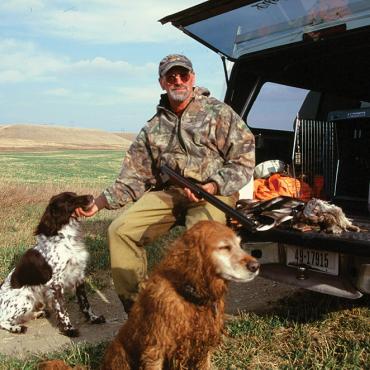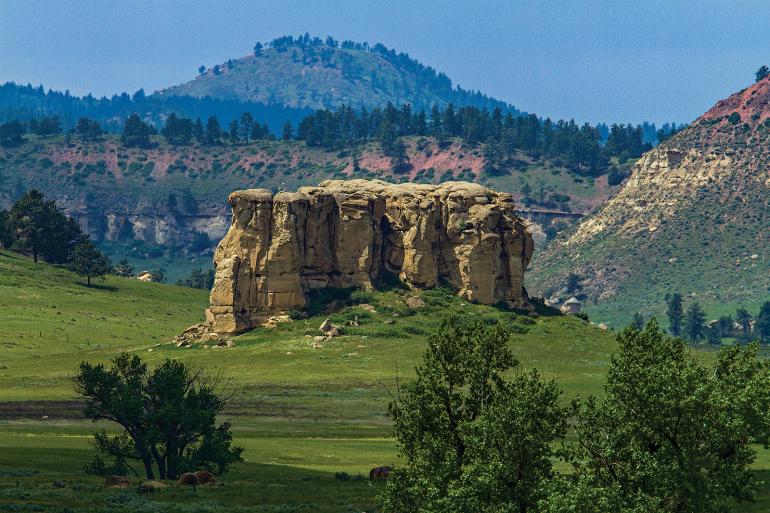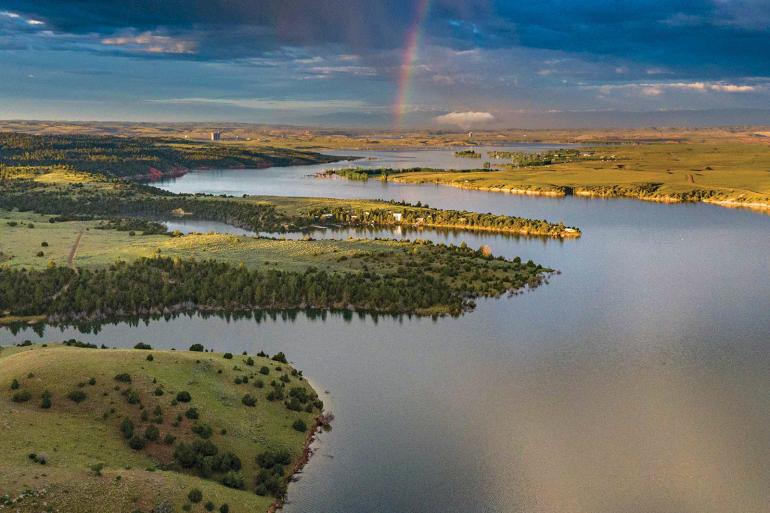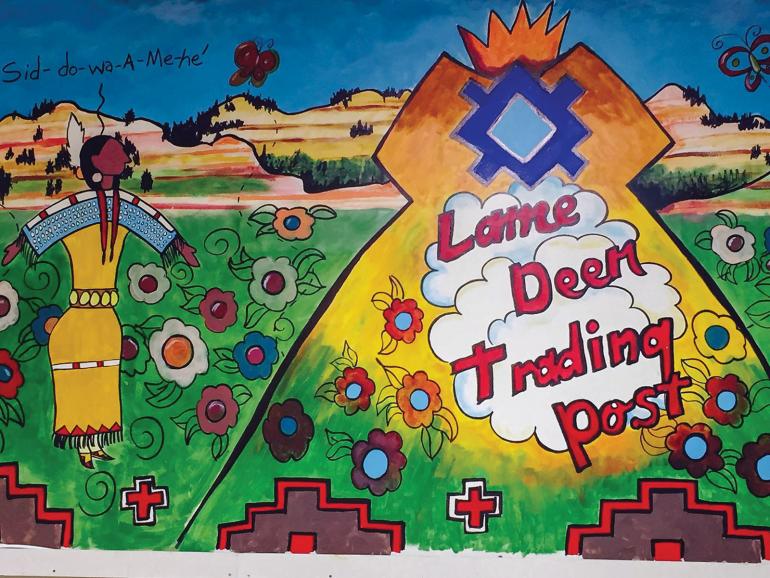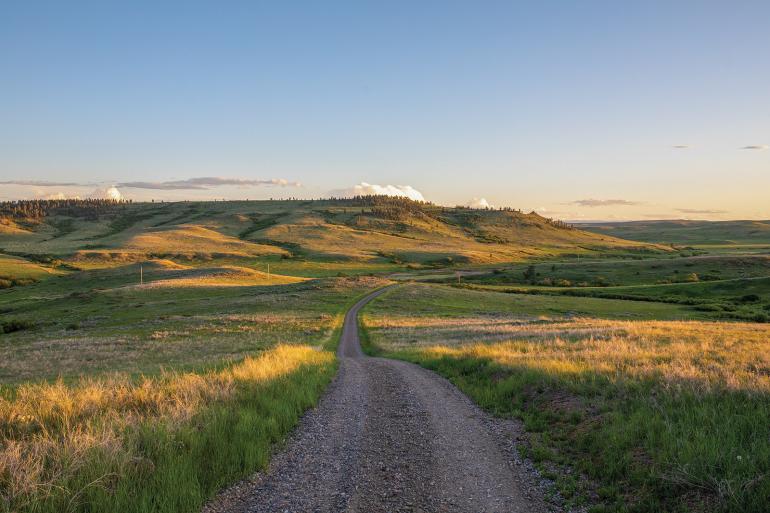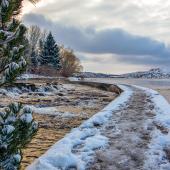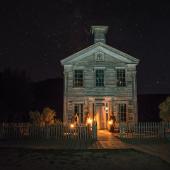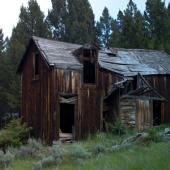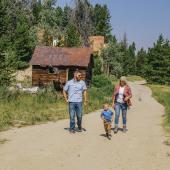Go East Young Man, Go East
Exploring Montana’s Indian Country.
Come April, even a diehard wintersports enthusiast is ready to exchange clunky ski boots for feather-weight trail runners, and ski poles for hiking sticks. After all, it’s spring! More often than not, that means loading up the pickup, camper, or Suby, and pointing it south toward Red Rock Country.
But in the past few years, when robins and cumulous clouds appear in the sky, I’ve headed in a different direction—east. My destination has been the tribal, state, federal, and private lands of the region often referred to as “Indian Country.” It includes the 444,000-acre Northern Cheyenne (Tsétsêhéstâhese) Reservation, the 2.2-million-acre Crow (Apsáalooke) Reservation, a chunk of the Custer-Gallatin National Forest, state and national park units, BLM lands, and sprawling private ranches.
I’m not sure why I initiated this south-central Montana spring tradition. But I have returned from every one of these journeys intellectually and spiritually enriched by what I saw and experienced. They have also reinforced my appreciation for Montana’s incredibly diverse landscapes and rich cultural heritage—as well as their related environmental and social challenges.
Unlike being in a southern Utah campground in April, I don’t observe many “6” license plates, indicating fellow Gallatin County residents. That is part of its charm, and I hesitate to put even a dim spotlight on the region. But I feel it’s important to have some firsthand knowledge of issues often featured on the Montana evening news, such as conflicts over energy development, the economic challenges facing rural communities, or the tragedy of missing and murdered indigenous women. We also need to realize there are many positive stories coming out of this wondrous region that, of course, never make front-page news.
What Is Indian Country?
In reality, all of America is Indian Country. But in this context, it’s a commonly used term appearing in U.S. Code and numerous court decisions. The National Congress of American Indians says this: When used appropriately, Indian Country takes on a powerful meaning legally and symbolically, for all tribal nations. Indian Country is wherever American Indian spirit, pride, and community are found. It resides not only in law books, legislation, and historical treatises, but also on ancestral homelands, within our homes, and in the hearts of American Indians and Alaska Native People everywhere. It is important to remember that reservations are sovereign lands governed by tribal governments. They are not public lands like national forests. Some allow non-tribal recreation with a permit. Others don’t. Be sure to find out which is the case before recreating on reservation lands. Also, any visit to tribal lands would be greatly enhanced with native guides that may be available.
Vignettes from Indian Country
What follows is a sampling of some memorable experiences gleaned from my trips east. Though some were planned, most fall into the category of serendipity. If you appreciate the unexpected, up the frequency of serendipitous experiences by not overly-prepping for your journey. Being self-contained can rob you of memorable cross-cultural encounters.
Last year, my friend Sarah joined me for a trip east. We stopped at the Little Bighorn National Monument—one of the nation’s most iconic battlefields. We toured the visitor center, which describes not only the battle but also the long, tragic history that led to this titanic confrontation. We walked through the poignant monument dedicated to the native people who died defending their homeland and way of life. Then we drove the five-mile road that connects the site of Custer’s Last Stand to the Reno-Benteen Battlefield, which is an integral, though often overlooked part of that momentous day. Stopping at one of the interpretive signs illustrating the associated events, we noticed movement in the grass not ten feet from the parking area. A dozen or so sharptail grouse strutted and sparred with each other, fanning their tail feathers, oblivious to our presence. As a bird hunter, I have long admired this species, but never had the opportunity to observe their animated spring mating rituals. It was a moment of joy and wonder in the midst of a deeply evocative landscape.
The Tongue River Reservoir State Park is well-known to walleye fishermen. In April, however, it’s chilly and windswept, and you won’t have trouble finding a campsite. We arrived as the sun was setting and sprang into action to get our tent up before dark—with special care given to making damn sure it was staked properly. Bundled up, we cooked by headlamp and dove into the tent as soon as the dishes had been washed and the gear stowed. We’d set an alarm for early the next morning, but were startled from our sleeping bags by something else instead. It was the haunting cry of a loon, probably on its way north. That’s one creature we hadn’t anticipated in this part of the world. A welcome, if itinerate, visitor to this isolated site.
Lame Deer is the capital of the Northern Cheyenne Nation. I love the roundabout on Hwy. 212 at the entrance to town, requiring everyone driving that road to circle around the distinctive sky-blue Northern Cheyenne flag. Tribal offices, Chief Dull Knife College, a lively gas station, and small businesses comprise the downtown. But my favorite stop is the Lame Deer Trading Post. It’s well-stocked with a nice produce and meat section and some lovely murals depicting Northern Cheyenne heritage. I like to check out their selection of beadwork, Pendleton blankets, and spiritual items like brightly colored prayer cloths, sage bundles, and natural pipe tobacco. I once pondered buying an exquisite, silver dollar-size medicine wheel made of porcupine quills. Though I resisted the temptation, I couldn’t get it out of my mind. A few days later I called the store to see if they could possibly mail it to me. They did one better: a couple of young college students from Lame Deer hand-delivered it to me in the parking lot of the Bozeman Walmart.
The Tongue River Breaks of the Custer-Gallatin National Forest are exactly what they sound like—a crumpled, arid landscape of sandstone formations and scattered pines. There are no established trails, but game and cattle have created a spaghetti-system of traces that one can follow on foot if there’s no particular destination in mind. Just be sure to look behind you as often as you look in front, lest you get disoriented (can you tell I don’t use a GPS?). It was here that we stumbled on the first wildflowers of the season, the delicate-but-hardy mountain star lilies. After a long winter, it was a refreshing wonder, and we found a perfect sun-drenched rock to lean back on for an afternoon meditation.
Though fond of all our state parks, the Rosebud Battlefield is perhaps my favorite. It’s not a spectacular landscape—mainly rolling grass and sage-covered hills. Nor is it extensively developed—a FWP outhouse, some simple but effective interpretive signs, a dirt road that passes through part of the park, and a doubletrack for foot and horse travel only. But every time I visit, I’m haunted by an unmistakable vibe that sends shivers down my spine. Generally, it’s late in the afternoon. I like to reverently stroll these hallowed grounds, trying to imagine what it was like on June 17, 1876, when over 2,600 soldiers and native warriors on horseback (including Crazy Horse) confronted each other during a day-long series of skirmishes. It was a dramatic prelude to the battle of the Little Big Horn a week later. During one of these visits, as shadows lengthened and the sun sank below the horizon, I swear I heard the sound of whinnying horses. I thought they must be just over a hill and out of sight. But when I crested the rise, there was nothing.
What comes to mind when you hear the word “Colstrip?” Maybe a sad, ash-laden town sitting next to a smoke-belching power plant? Although Colstrip is a company town, it’s a tidy, pleasant community with amenities like a recreation center, golf course, trails, and schools. I like to joke, though half seriously, that it is Montana’s best example of a “smart-growth community,” with a hard edge between the town and the countryside, and a trail system that provides pedestrians and cyclists a safe option for getting to school or work. The carbon emissions from the powerplants at both Colstrip and the cities that purchase their coal are undeniably an enormous environmental problem. But in trying to solve it, let’s recognize that good, hardworking folks trying to make an honest living could be severely affected. There are, I believe, viable solutions, though they will require deep thinking, collaboration, and broad support. Are Montanans still capable of meeting this challenge? I sincerely hope so.
Epilogue
These are just a few of the wild, wonderful, though sometimes poignant and tragic sights one can experience during a journey east. You probably won’t return with a nice tan, a serape, or road rash. But if you’re willing to explore these storied landscapes and vibrant cultures with an open mind and heart, you’ll most likely gain a deeper appreciation of why Montana is the special place that it is. And why, if we want to keep it that way, we need to recognize that we are all in this together, native and non-native, and begin to act accordingly. Oh, and you might also return home with a porcupine-quill medicine wheel.
Travel Tips
How one travels is just as important, if not more so, than where one goes. Keep the following in mind to maximize your experience in Indian Country. —DG
Make Frequent Stops. Resist making a Costco run to stock up on everything you’ll need to eat, drink, and otherwise consume for a week. Make sure you have reason to stop at grocery stores and trading posts, eat at small-town cafés, maybe stay at a motel, or visit a Forest Service office to ask about camping. In other words, meet the people who call this region home.
Be Engaged. Check out bulletin boards at stores and gas stations. They can shed light on community character, alert you to happenings that you may want to attend, or businesses to patronize. Tune-in to AM stations, at least when they are airing local commentary or news. Hear what fellow Montanans have to say. You might also pick up a relevant audio book. We recently listened to The Last Stand: Custer, Sitting Bull, and the Battle of the Little Bighorn, as we drove past many of the sites and geographic features described in the book. The powerful, Bury My Heart at Wounded Knee, is an even more relevant and insightful book.
Stay Flexible. This applies to both your itinerary and your mindset. Accept changes to your schedule due to unexpected closures as opportunities to experience something you hadn’t envisioned—remember, when one door closes, another opens. More importantly, be respectful, nonjudgmental, and open-minded—there are good reasons why people think and act differently than you do.

